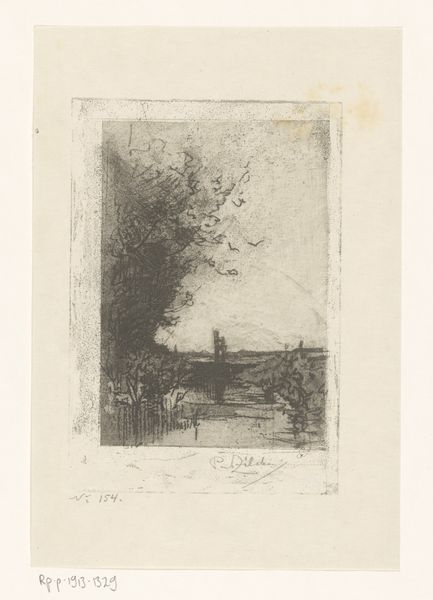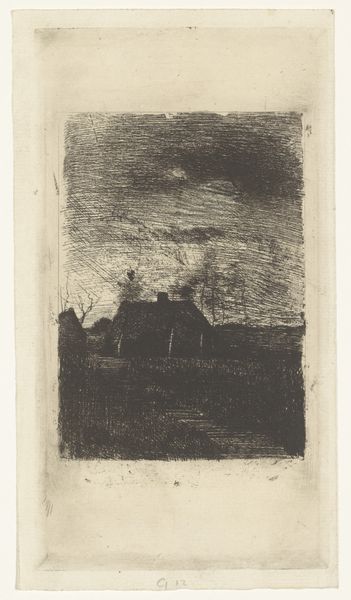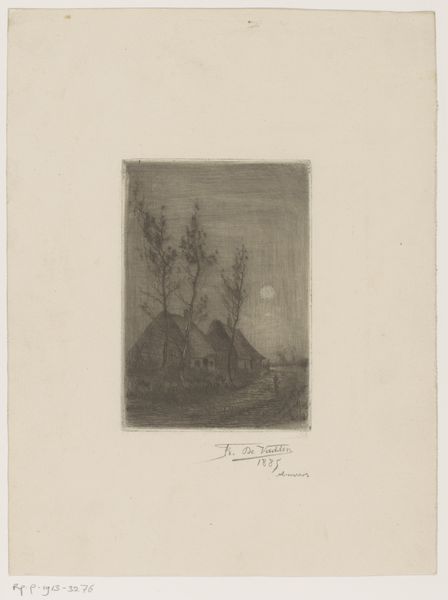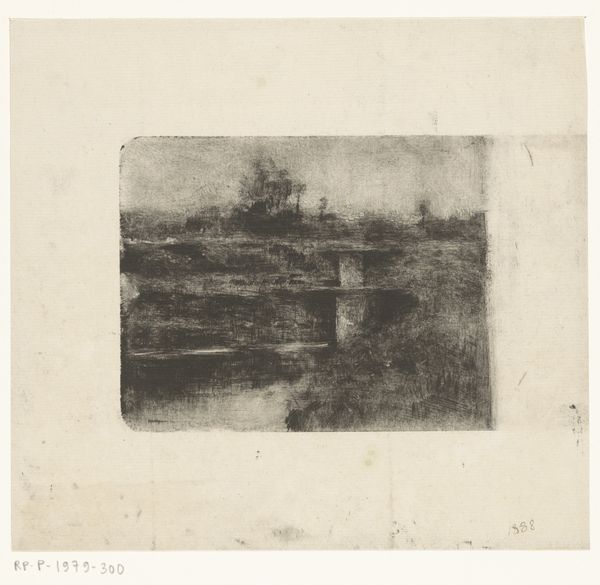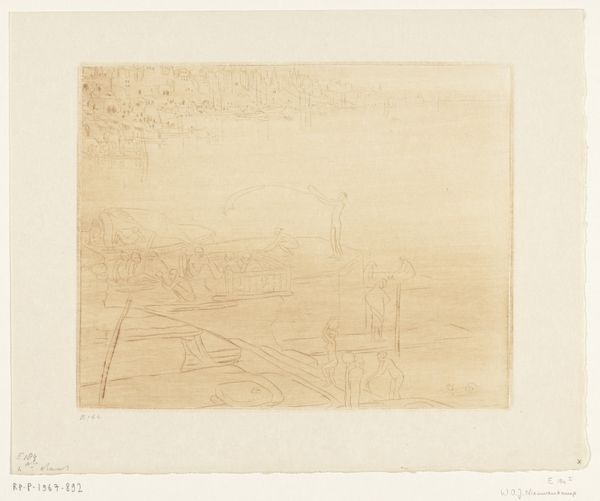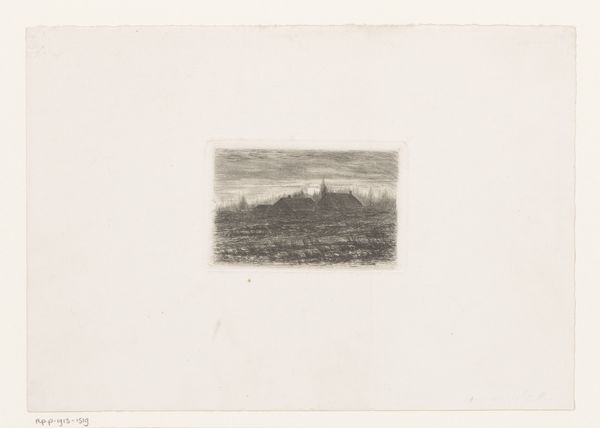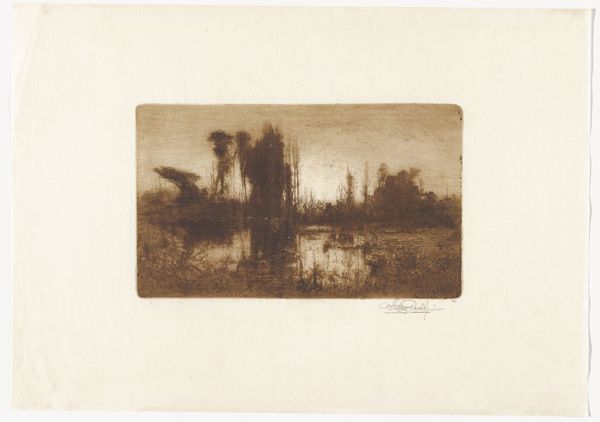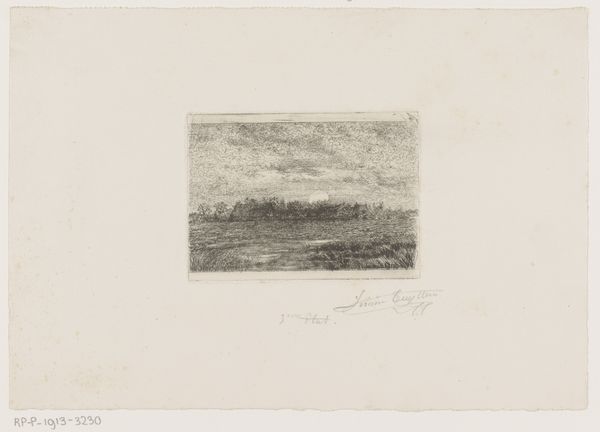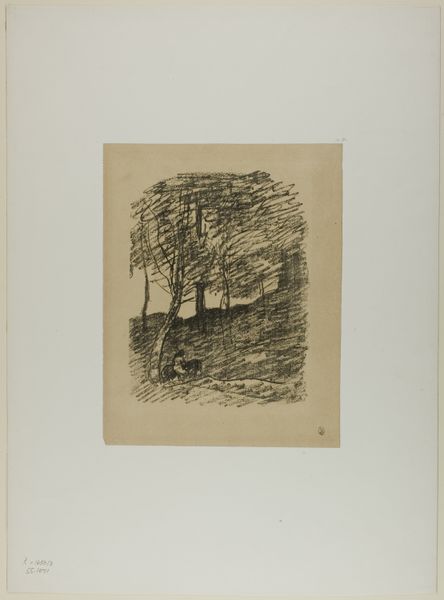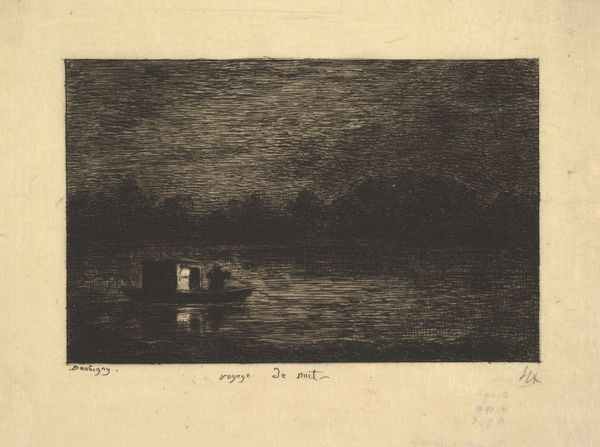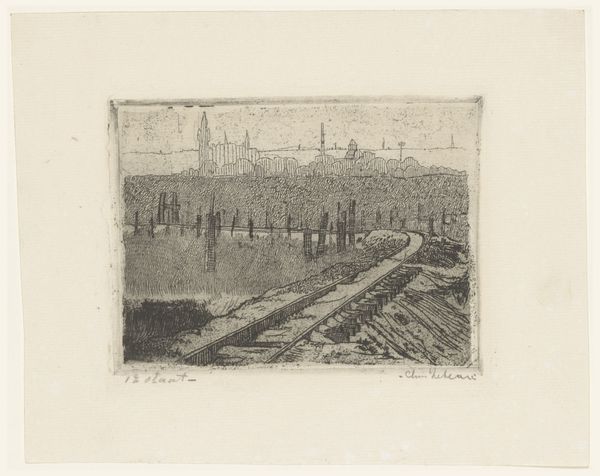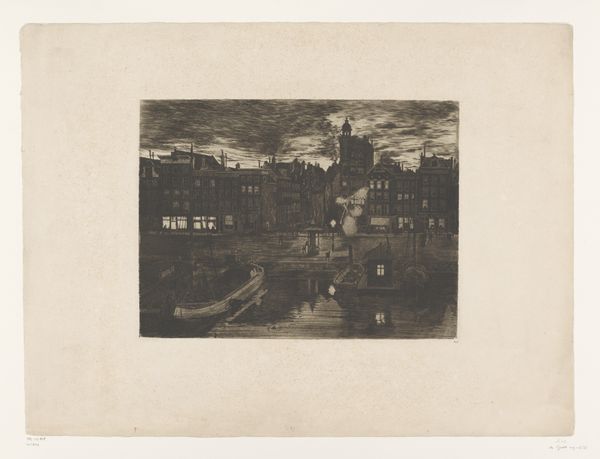
Dimensions: 176 × 250 mm (image); 280 × 270 mm (sheet)
Copyright: Public Domain
Curator: This is Joseph Pennell's "St. Paul's," an etching from 1894 currently residing here at The Art Institute of Chicago. Editor: My first thought is that it's incredibly somber. The scene is shrouded in darkness; St. Paul's barely emerges from the gloom. It speaks of the weight of history, or perhaps the anxieties of the era. Curator: Pennell, deeply inspired by Whistler, used etching to evoke atmosphere. The very act of scratching into the metal plate suggests an attempt to reveal something hidden beneath the surface. Look closely, and the cathedral seems to embody resilience amidst obscurity, like a spiritual anchor. Editor: I see it, but I also see how this obscured view could represent the marginalization of certain communities during this time of industrial and social upheaval. The darkness swallows everything, and who gets to be seen, illuminated, becomes a political question. St. Paul's looms, certainly, but at what cost to those dwelling in the shadows? Curator: Interesting point. I'd considered the symbolic weight of St. Paul's itself, often understood to represent spiritual authority. Its darkened form could suggest a questioning of that very authority during a period of rapid societal change. Editor: Exactly. Are those scattered lights in the foreground beacons of hope or merely flickering signs of an unequal distribution of resources and opportunities? Art like this urges us to engage with not just the visual experience, but its wider social and political implications. Curator: This play of light and dark reminds me of chiaroscuro, where intense contrasts convey symbolic meaning. I suppose, thinking more on the sociopolitical climate, it could echo prevailing class disparities, painting a broader portrait of power, then and now. Editor: Absolutely, it makes one question: What aspects of the social and historical landscape remain obscured in our own time, and whose narratives are privileged by the dominant narratives? Curator: It seems Pennell's dark rendering gives us ample space to reflect on what stands illuminated, what lies hidden, and for whom. Editor: It really emphasizes how critical, intersectional analyses of images are in navigating and challenging biases in history, cultural assumptions, and the dominant ways of seeing that influence our realities today.
Comments
No comments
Be the first to comment and join the conversation on the ultimate creative platform.
